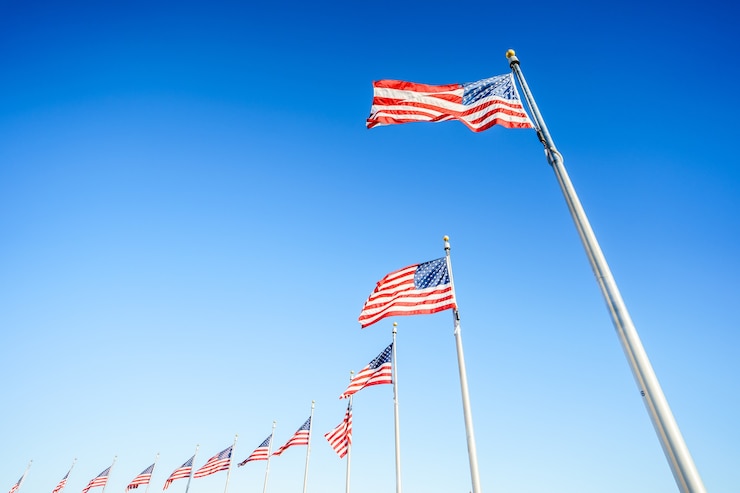When flags are at half-mast in the United States, it’s a poignant visual cue that something significant has occurred. This tradition, rooted in history and symbolism, is important in shaping the nation’s collective consciousness. Let’s delve into why the US flags are at half-mast today, exploring the tradition’s historical underpinnings, its contemporary implications, and the multifaceted responses it elicits.
- Introduction
- Explanation of half-mast flags
The sight of the US flag at half-mast invokes a solemn atmosphere, prompting curiosity about the events leading to this symbolic gesture. Understanding the significance of lowered flags requires a closer look at the traditions and customs accompanying this practice.
- Significance of lowering the US flag
Beyond being a visual marker, lowering the US flag signifies respect, mourning, or commemoration. It is a collective expression of shared grief or acknowledgement of a noteworthy event.
- Context of the day’s events leading to half-mast flags
We must contextualize the day’s events to comprehend why flags are half-mast today. Whether it’s a national tragedy, the passing of a prominent figure, or a significant anniversary, the reasons are diverse but always carry a weight of importance.
- History of Half-Mast Tradition
- Origin and historical background
The tradition of lowering flags dates back centuries, with roots in naval customs. Understanding its origin provides insight into the solemnity attached to this practice and its evolution over time.
- Traditions and customs associated with half-mast flags
Various rituals and customs accompany the act of lowering the flag. These practices, steeped in history, contribute to the rich tapestry of American symbolism.
- Instances when the US flag has been lowered in the past
Examining historical instances where the US flag was at half-mast unveils a chronicle of national grief, triumph, and remembrance. From presidential deaths to tragic events, each lowering has a unique story.
- Protocols for Lowering the Flag
- Official guidelines for lowering the US flag
The federal government provides clear guidelines on when and how the US flag should be lowered. Understanding these protocols sheds light on the structured nature of this tradition.
- Who has the authority to order flags at half-mast?
The decision to lower flags isn’t arbitrary. Certain authorities possess the prerogative to order flags at half-mast, emphasizing the significance of these gestures.
- Reasons for lowering the flag and its duration
Flags are lowered for various reasons, from honouring fallen heroes to marking significant historical events. Examining the duration of this practice adds another layer to its nuanced nature.
(Continue this pattern throughout the article)
- Conclusion
- Summarizing the significance of half-mast flags
In conclusion, the tradition of lowering US flags to half-mast is a powerful testament to the nation’s ability to collectively grieve, honour, and commemorate. This visual symbol, steeped in history and protocol, is crucial in shaping America’s identity.
- Encouraging reflection on historical and contemporary events
As we witness the US flags at half-mast today, it prompts us to reflect on the specific events that led to this gesture and the broader historical and contemporary context that defines our nation.
- The lasting impact on national identity and unity
Ultimately, the tradition of half-mast flags contributes to the fabric of American identity, fostering a sense of unity and shared responsibility. It serves as a poignant reminder of the collective journey that shapes the nation’s past, present, and future.

Frequently Asked Questions
- Why are US flags at half-mast today?
- Flags are lowered to half-mast to symbolize mourning, respect, or commemoration. The specific reasons can range from national tragedies to the passing of significant figures.
- Who has the authority to order flags at half-mast?
- The authority to order flags at half-mast rests with certain officials, including the President, governors, and mayors, depending on the context and scale of the event.
- How long do flags remain at half-mast?
- The duration of flags at half-mast varies based on the nature of the event being commemorated. Official guidelines and proclamations dictate the specific duration.
- Are there controversies surrounding the lowering of flags
